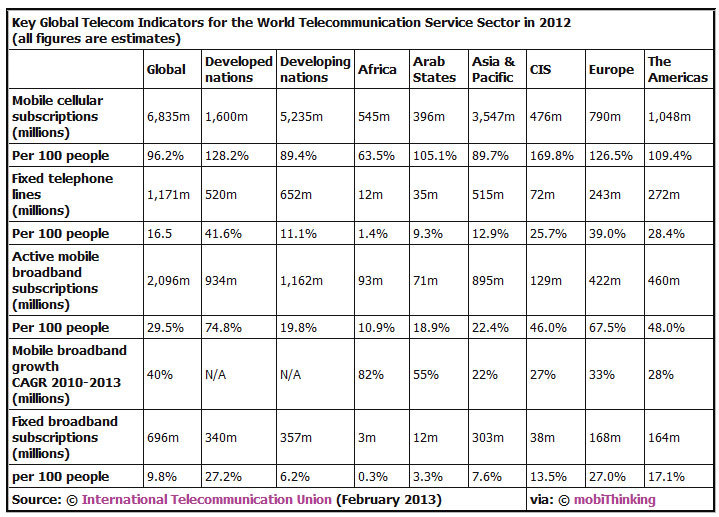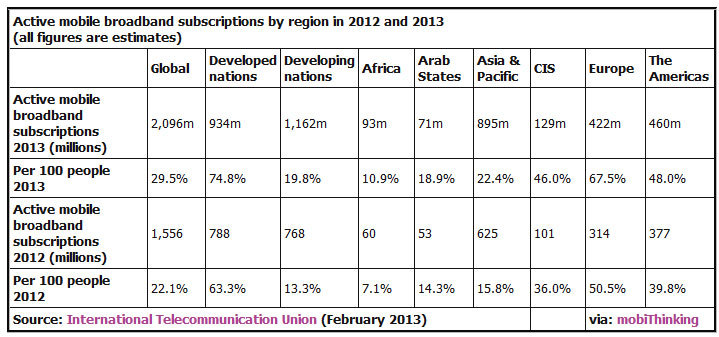The reasons for the popularity of Internet messengers, or why we are confident in the success of Converse
Probably no one needs to prove the fact that instant messengers have become firmly established in our lives. In fact, they provided a new freedom of communication, becoming a more flexible, affordable and high-quality alternative to both land and mobile communications. With the growing popularity of mobile devices, messengers transformed (support for low resolution screens and ARM architecture processors appeared) and multiplied, which quite naturally led to increased competition in the segment. Not currently in the catalogs of Google Play and the App Store there are several dozens of instant messengers, of which each is able to claim the global title of the best. One of the latest innovations in the Google Play catalog is the Converse application, created by an international group of developers, some of whom are our compatriots. Within the framework of this blog, we will cover Converse in detail, compare it with competitors, talk about the development features and "features" of the application. Well, they decided to start with an answer to the banal question: why do we need another internet messenger ?

In our opinion, instant messengers are the category of applications that have not yet received proper implementation and, if you like, saturation, for at least three interrelated reasons:
And now let's look at each of them in more detail.
Over the past 7 years, the cost of smartphones has noticeably decreased, and their characteristics, on the contrary, have improved. The easiest way to track this trend is on flagship devices. For example, the Sony Ericsson P1i smartphone released in 2007 was estimated at 650 euros, while it was equipped with 128 MB of RAM and a Philips Nexperia PNX4008 single-core processor with a maximum frequency of 220 MHz. And last year, the Sony Xperia ZL smartphone was priced at 550 euros, which has 2 GB of RAM and a Qualcomm APQ8064 quad-core processor with a frequency of 1.5 GHz. Tablets may not progress so quickly on the hardware, but this is quite explainable by the fact that they appeared as a class later than smartphones.

The growth of computing capabilities of mobile devices, as well as the transition to more modern data transfer technologies (LTE), on the one hand, contributes to the consumption of traffic in mobile networks (including Internet messengers), on the other hand, greatly simplifies the development of mobile applications. If earlier when creating an application, it was necessary to take into account the modest computing capabilities of the CPU and a small amount of RAM, now these problems have faded into the background.
Empirical observations of the ever-decreasing price of smartphones are confirmed by data from analytical agencies. Thus, according to IDC, the average price of a smartphone in 2011 was $ 448, in 2012 - already $ 407, and in the past it has already fallen to $ 372. According to forecasts, by 2017 the average cost of a smartphone will fall to $ 309.
')
At the same time, an increase in sales of smartphones is predicted: from 722.5 million last year to almost a billion this year. Again, as calculated by IDC.
Statistics released late last year by the International Telecommunication Union states that there are already 6.8 billion mobile users in the world, which is roughly equivalent to 96% of the world's population. At the same time, the growth of users went very fast: in 2010, 5.4 billion people used cellular communication services, and in 2011 - already 6 billion. If we reject such natural processes as migration between operators and activation of several SIMs by one user, then we can say that the market is close to saturation.

On the other hand, not everyone uses cellular communication all the time and consumes a large amount of services. And let's be honest: the availability of cellular communication does not mean the active use of mobile Internet in all regions. And here, humanity still has a lot to strive for: active users of mobile broadband Internet access - just over two billion.

And just for the year - from 2012 to 2013 - their number increased by 540 million! And all the new active users of broadband Internet access - about four billion - are potentially new users of instant messengers. So even 20-30 programs of appropriate orientation, placed in the catalogs of the App Store and Google Play, are not able to cover the needs of such a number of people.
And we can not resist, so as not to give a diagram of the distribution of volumes of "voice" and "numbers" for the six-year period published by Ericsson. Very clear, is not it?

The fact that mobile traffic flows into Internet instant messengers was proved by the example of Facebook and WhatsApp: being unable to significantly increase the audience, Facebook bought a messenger with half a billion users in order to “convert them to their faith”. By the way, the losses from the work of WhatsApp in 2013 were estimated by cellular operators at $ 32.5 million, and by 2016 these losses will increase to $ 54 million. In fact, this is the money that users save by choosing much cheaper text messaging through messenger, not using SMS. It is terrible to think what losses for mobile operators are the use of all instant messengers combined.
However, text messaging is, let's say, only half the functionality of a good manager. The second important component is voice calls, VoIP. And here, analysts predict a great future for messengers. So, according to WhichVoIP.com, by 2017 the global volume of VoIP services will reach $ 82.7 billion! But another thing is even more interesting: by 2016, the annual income generated by mobile applications with VoIP support (i.e., Internet messengers) will reach $ 36 billion. Truly, now is the most fertile time for the release of instant messengers :)

In the light of the foregoing, it becomes clear that mobile Internet instant messengers have a great future, both in terms of increasing the audience and in terms of commercialization. With due respect to the developers (regular updates, the implementation of functions required by users, smart work, etc.), the mobile messenger has every chance of success. And we will make every effort to ensure that Converse is such a successful project. We are also open to dialogue, and if the community is interested in certain topics, then we are ready to highlight them in our blog.
IDC: Smartphones Expected to Grow 32.7% in 2013 Fueled By Declining Prices and Strong Emerging Market Demand
Ericsson Mobile Report
mobiThinking: Global mobile statistics 2013 home mobile web apps, apps, marketing, advertising, subscribers, and trends ...
Bloomberg: WhatsApp Shows Hows Phone Carriers Lost Out on $ 33 Billion
WhichVoIP: Global VoIP Trends in 2014

In our opinion, instant messengers are the category of applications that have not yet received proper implementation and, if you like, saturation, for at least three interrelated reasons:
- mobile devices are becoming cheaper from year to year, with increasing their computing power;
- Users of the whole world “get rid” of land lines and migrate to mobile networks where they actively consume traffic;
- Mobile network traffic flows into mobile instant messengers.
And now let's look at each of them in more detail.
Reason number 1. Mobile devices are getting cheaper, their computing power is growing
Over the past 7 years, the cost of smartphones has noticeably decreased, and their characteristics, on the contrary, have improved. The easiest way to track this trend is on flagship devices. For example, the Sony Ericsson P1i smartphone released in 2007 was estimated at 650 euros, while it was equipped with 128 MB of RAM and a Philips Nexperia PNX4008 single-core processor with a maximum frequency of 220 MHz. And last year, the Sony Xperia ZL smartphone was priced at 550 euros, which has 2 GB of RAM and a Qualcomm APQ8064 quad-core processor with a frequency of 1.5 GHz. Tablets may not progress so quickly on the hardware, but this is quite explainable by the fact that they appeared as a class later than smartphones.

The growth of computing capabilities of mobile devices, as well as the transition to more modern data transfer technologies (LTE), on the one hand, contributes to the consumption of traffic in mobile networks (including Internet messengers), on the other hand, greatly simplifies the development of mobile applications. If earlier when creating an application, it was necessary to take into account the modest computing capabilities of the CPU and a small amount of RAM, now these problems have faded into the background.
Empirical observations of the ever-decreasing price of smartphones are confirmed by data from analytical agencies. Thus, according to IDC, the average price of a smartphone in 2011 was $ 448, in 2012 - already $ 407, and in the past it has already fallen to $ 372. According to forecasts, by 2017 the average cost of a smartphone will fall to $ 309.
')
At the same time, an increase in sales of smartphones is predicted: from 722.5 million last year to almost a billion this year. Again, as calculated by IDC.
Reason number 2. Migration of users to mobile networks and increase in the number of active users of mobile broadband access
Statistics released late last year by the International Telecommunication Union states that there are already 6.8 billion mobile users in the world, which is roughly equivalent to 96% of the world's population. At the same time, the growth of users went very fast: in 2010, 5.4 billion people used cellular communication services, and in 2011 - already 6 billion. If we reject such natural processes as migration between operators and activation of several SIMs by one user, then we can say that the market is close to saturation.

On the other hand, not everyone uses cellular communication all the time and consumes a large amount of services. And let's be honest: the availability of cellular communication does not mean the active use of mobile Internet in all regions. And here, humanity still has a lot to strive for: active users of mobile broadband Internet access - just over two billion.

And just for the year - from 2012 to 2013 - their number increased by 540 million! And all the new active users of broadband Internet access - about four billion - are potentially new users of instant messengers. So even 20-30 programs of appropriate orientation, placed in the catalogs of the App Store and Google Play, are not able to cover the needs of such a number of people.
And we can not resist, so as not to give a diagram of the distribution of volumes of "voice" and "numbers" for the six-year period published by Ericsson. Very clear, is not it?

Reason number 3. Mobile traffic flows into instant messengers
The fact that mobile traffic flows into Internet instant messengers was proved by the example of Facebook and WhatsApp: being unable to significantly increase the audience, Facebook bought a messenger with half a billion users in order to “convert them to their faith”. By the way, the losses from the work of WhatsApp in 2013 were estimated by cellular operators at $ 32.5 million, and by 2016 these losses will increase to $ 54 million. In fact, this is the money that users save by choosing much cheaper text messaging through messenger, not using SMS. It is terrible to think what losses for mobile operators are the use of all instant messengers combined.
However, text messaging is, let's say, only half the functionality of a good manager. The second important component is voice calls, VoIP. And here, analysts predict a great future for messengers. So, according to WhichVoIP.com, by 2017 the global volume of VoIP services will reach $ 82.7 billion! But another thing is even more interesting: by 2016, the annual income generated by mobile applications with VoIP support (i.e., Internet messengers) will reach $ 36 billion. Truly, now is the most fertile time for the release of instant messengers :)

Conclusion
In the light of the foregoing, it becomes clear that mobile Internet instant messengers have a great future, both in terms of increasing the audience and in terms of commercialization. With due respect to the developers (regular updates, the implementation of functions required by users, smart work, etc.), the mobile messenger has every chance of success. And we will make every effort to ensure that Converse is such a successful project. We are also open to dialogue, and if the community is interested in certain topics, then we are ready to highlight them in our blog.
References:
IDC: Smartphones Expected to Grow 32.7% in 2013 Fueled By Declining Prices and Strong Emerging Market Demand
Ericsson Mobile Report
mobiThinking: Global mobile statistics 2013 home mobile web apps, apps, marketing, advertising, subscribers, and trends ...
Bloomberg: WhatsApp Shows Hows Phone Carriers Lost Out on $ 33 Billion
WhichVoIP: Global VoIP Trends in 2014
Source: https://habr.com/ru/post/216803/
All Articles